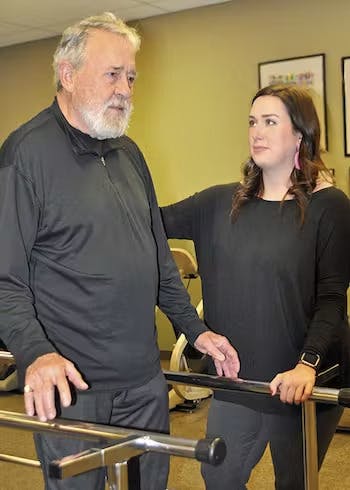
Physical Therapy and the Balance System
Your sense of balance comes from many different systems working together to create stability of your body and your vision. Good balance depends on correct sensory information, proper use of that information by the brain, and the right response from the muscles. The sensory information that is needed comes from your visual, somatosensory, and vestibular systems:
- Visual system: Your vision provides important information to the brain about your environment, specifically where your body is in relation to the horizon while still or moving.
- Somatosensory system: You have special sensors sensitive to stretch, pressure, vibration, and touch in your muscles, tendons, joints, and skin that help your brain to know how your body is positioned.
- Vestibular system: Balance organs in the inner ear tell the brain about the movements and position of your head. This system senses head movement and keeps your eyes focused. It can also tell the brain when your head is moving in a straight line (like when you are riding in a car or going up or down in an elevator) and sense the position of your head even when it is still (if it is upright or tilted).
Information about your current state from all of these systems travels to the brain stem. The brain stem also gets information from other parts of the brain, mostly about previous experiences that affect your sense of balance. Your brain can control balance by using the information that is most important for a particular situation.
For example, in the dark, when the information from your eyes is reduced or might not be accurate, your brain will use more information from your legs and your inner ear. If you are walking on a sandy beach during the day, the information coming from your legs and feet will be less reliable and your brain will use information from your visual and vestibular systems more.
Once your brain stem sorts out all of this information, it sends messages to the eyes and other parts of your body to move in a way that will help you keep your balance and have clear vision while you are moving.
If you are having difficulty walking, feel off balance or unsafe, or have fallen, a physical therapist can help to determine how well you are using these systems (or not) to keep your balance. Stretching tight tissue and strengthening specific muscles that are found to be limited are important for balance. You may be challenged with particular balance activities, under close supervision, to increase reaction time. You are also given a few simple exercises to perform at home to support what is done in the clinic.
